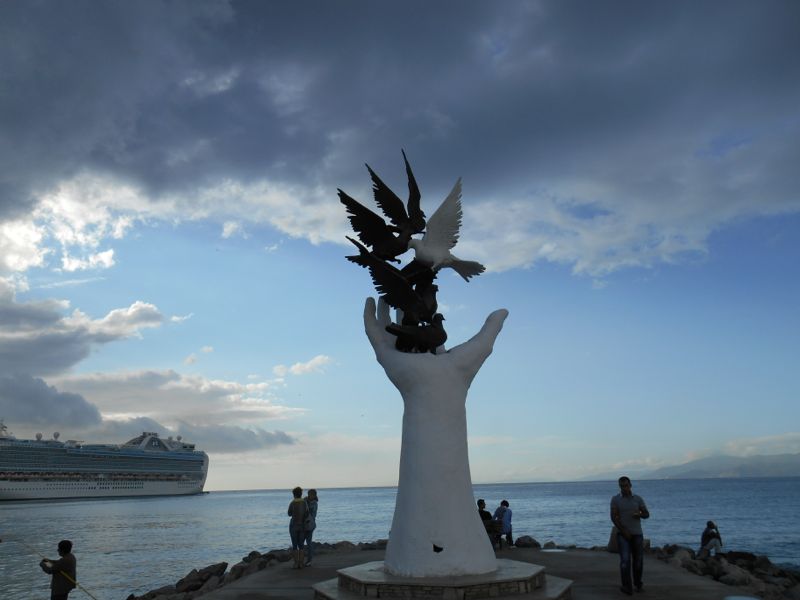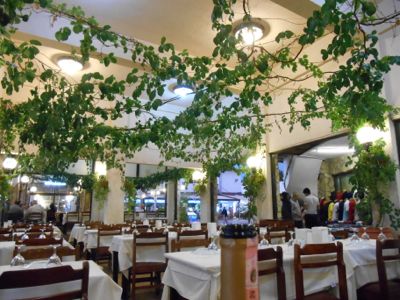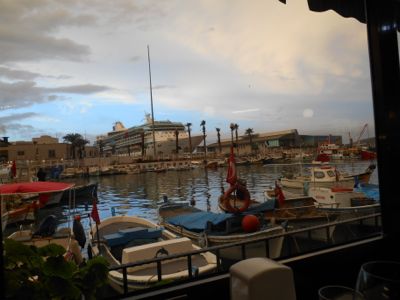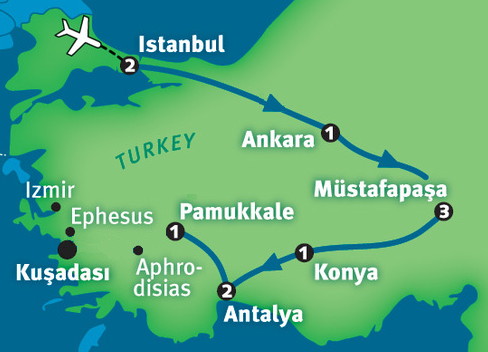Day 11 - Pamukkale / Heirapolis
Pamukkale
Pamukkale[*] (or "Cotton Castle") has been a resort for centuries. These thermal springs reminded me of the travertine formations of the Mammoth Hot Springs area of Yellowstone, but the water isn't nearly as hot. Our hotel had a thermal pool that was fed from the springs and I had a great soak before dinner.
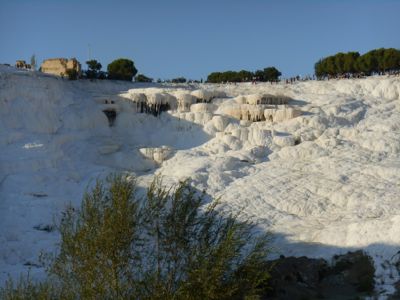
|
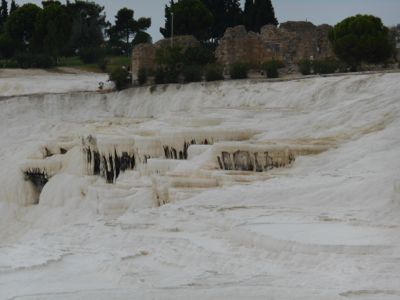
|
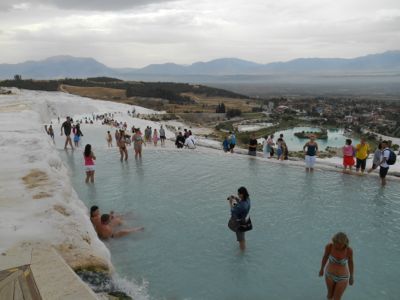
|
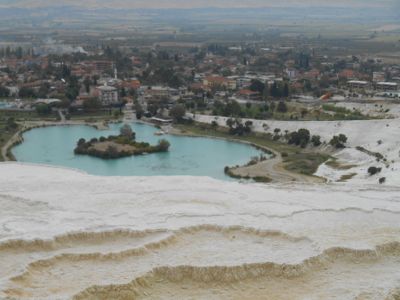
|
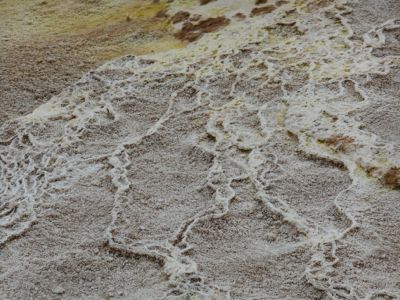
|
The springs are on a hillside overlooking the present day town of Pamukkale. On the plateau above the springs is the ancient town of Heirapolis. It developed as a tourist resort in Roman times.
I explored Heirapolis before trying out the pools and unfortunately I didn't have time for more than a quick wade through the nearest pools. Many people had walked much farther out and down - some seemed to be almost halfway down to the town below. (I wonder if it's possible to go all the way?) I really wouldn't have wanted to walk much more anyway, because shoes are forbidden and the surface was rather uncomfortable to walk on.
Heirapolis
Heirapolis is an interesting set of ruins to explore. It is much less crowded than Ephesus (which we would visit later). There were many people here, but they seemed to be more interested in the thermal springs and the swimming pool. (The Cleopatra Pool was originally a sacred pool and is very popular, but I didn't have time to visit it.)
|
partially excavated Temple of Apollo 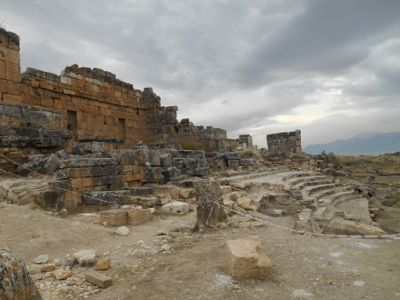 |
A Roman road - you can even see traces of the grooves made by their chariot wheels. 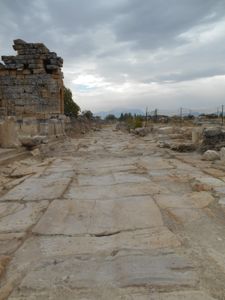 |
a public latrine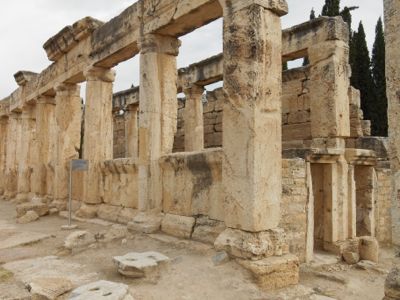 |
entrance to the baths
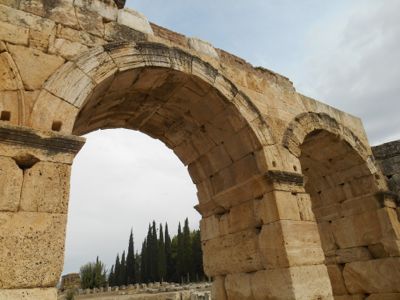 |
The theater in Heirapolis is the largest surviving Roman theater.
What I learned:
This is not an "amphitheater".
The seats only go part of the way around, so it is a "theater".
Since this was a tourist resort, even in ancient times, this theater
is larger than usual for a town of this size.
I found it interesting that there were statues (or replicas) on the stage area of the theater.
Usually these have been removed and placed in museums, so it was good to see them in
their original position. (There is a small museum in Heirapolis which might contain other statues. I didn't have time to visit it.)
There is also a Necropolis which has been used for centuries. There are many different types of burial chamber.
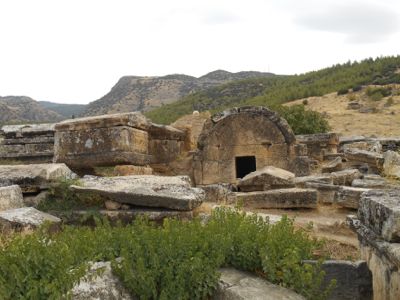
|
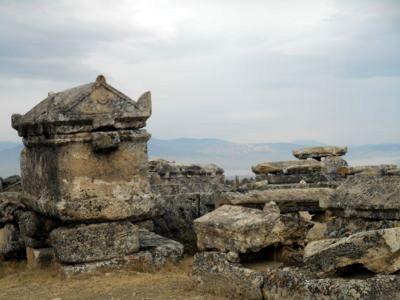
|
2nd century A.D.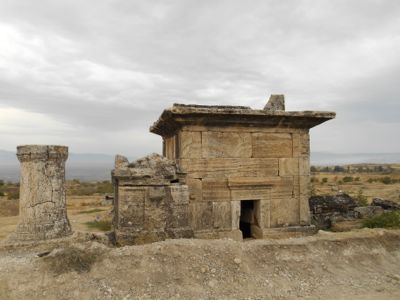
|
1st century A.D.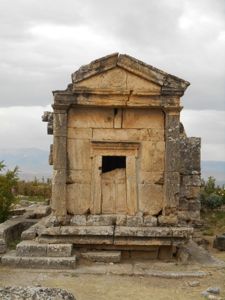
|
1st century B.C.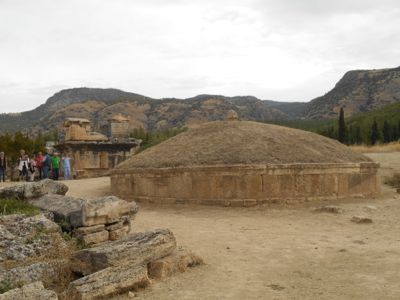
|
Kuşadası
Traveler's Tip:Like most tourist cities in Turkey, merchants here accept both Euros and Turkish Lira.
We arrived in Kuşadası just in time for a short walk around town. It is a cruise ship port. The ships had not yet left for their evening's travel, but passengers were already on board so we didn't run into throngs of tourists. It's main purpose seems to as be a port where ships can wait while the passengers take day trips to Ephesus and then buy souvenirs of their trip.
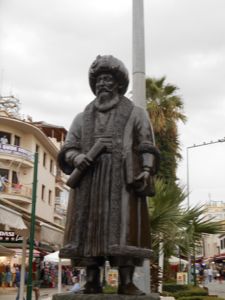
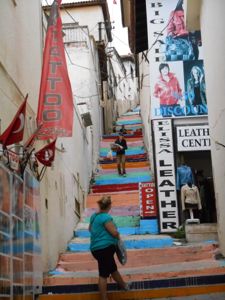
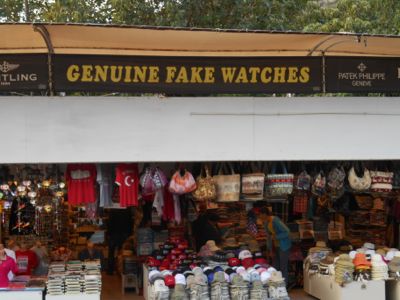
We all went our separate ways to explore the town, but I met up with one of the couples and we found a nice little restaurant for dinner. This is the restaurant and the view out the window over the harbor (and one last cruise ship still in port).
"giriz / çikiş"
entrance / exit (note: be careful pronouncing these)

 Not quite enough time to see all of Heirapolis.
I missed both the pool and the museum.
Not quite enough time to see all of Heirapolis.
I missed both the pool and the museum.

